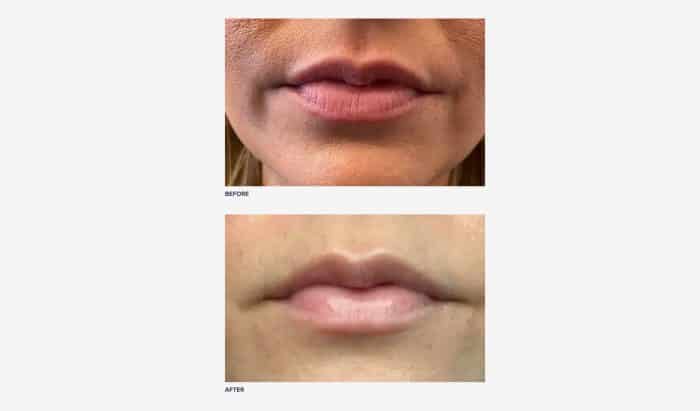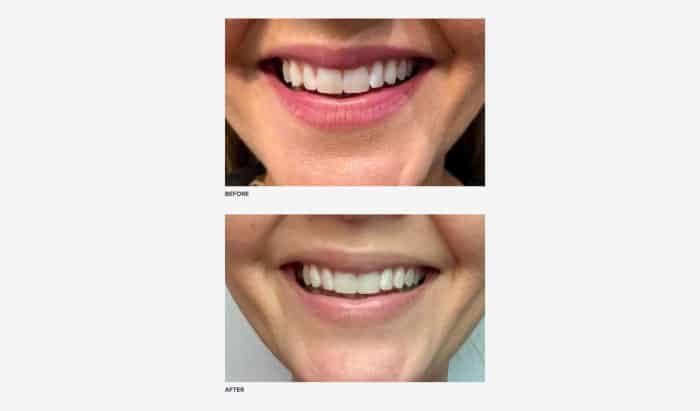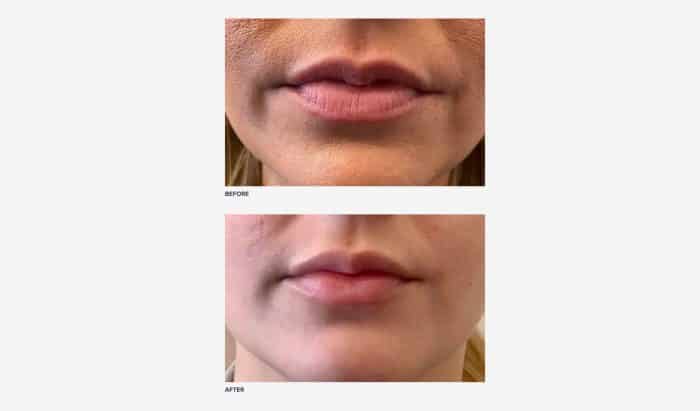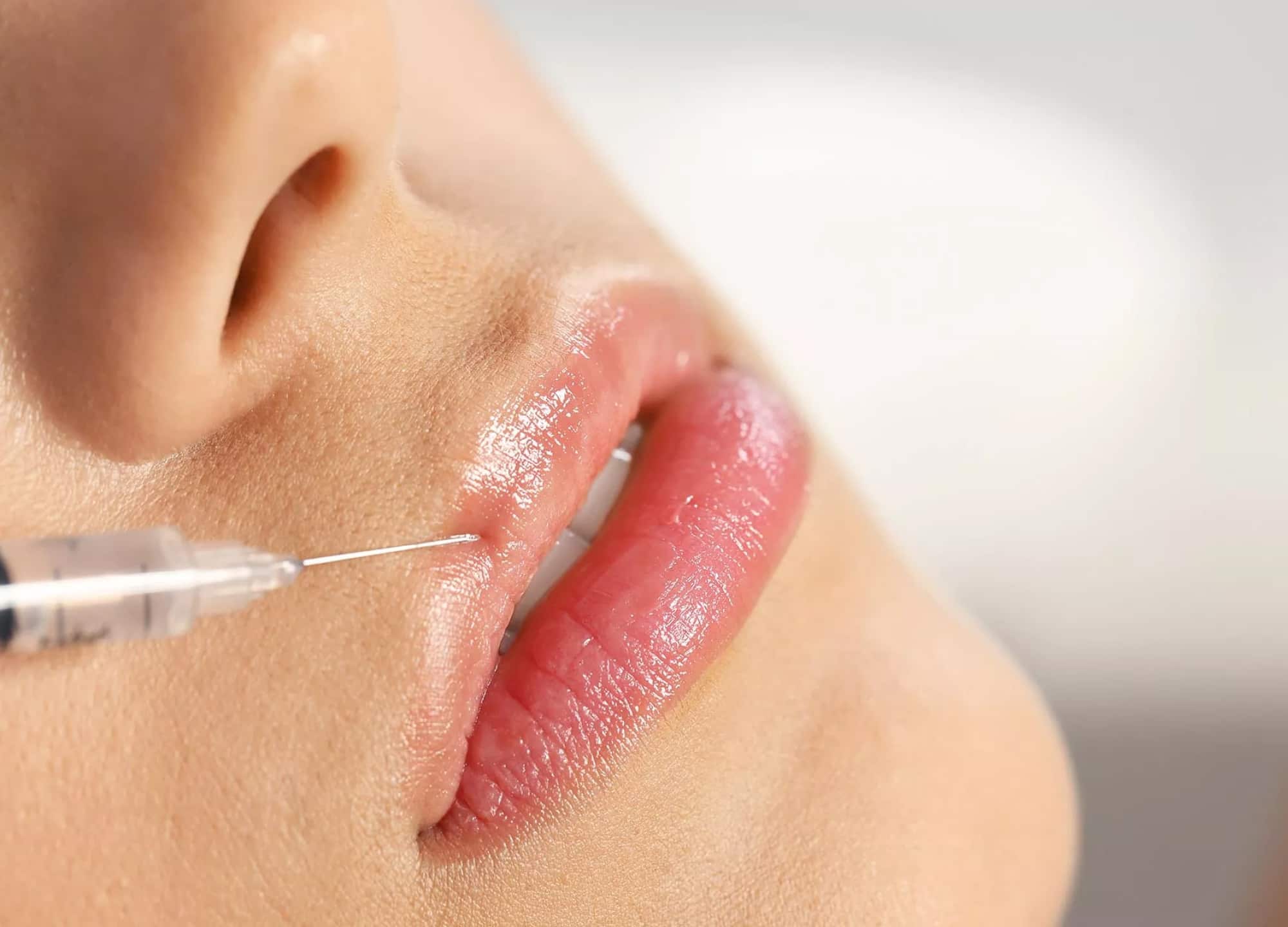Kate is a beauty publicist based in New York City. She got a Botox lip flip and lip filler, separately, six months apart. This is her experience, from the pain level to the downtime to whether the final results were Worth It.
“I felt like my lips were very average, and I became more aware of them as time went on. I work in the beauty industry, so I noticed a lot of people around me getting filler, and it made me think about getting it myself. I had a lot of curiosity of what my lips could look like, if they were just a little more plump. I didn’t want an extreme result—I just thought there was room for a little improvement—and I wanted to see how two different treatment options looked.”
Lip flip provider
Dr. Dara Liotta, a board-certified plastic surgeon in New York City
What is a lip flip?
A lip flip is a lip augmentation procedure that involves injecting a neuromodulator (Botox, Dysport, Xeomin, or Jeuveau) into the circular muscle that surrounds the mouth. “It extends from right underneath the nose to the vermilion border, where you apply lip liner,” says Dr. Liotta. She explains that you’d have to use “a ton of Botox” to relax the whole muscle, “and we don’t want to do that.” Rather, she says, “there’s a little fiber along the border that holds tension and tends to roll the lip in and thin it out. The goal of a lip flip is to flip the lip out and make it disappear less when you smile while accentuating the Cupid’s bow. The results are very subtle, but it does make a difference.”
Lip flip experience and results

During Kate’s appointment, Dr. Liotta skipped the numbing cream and used six units of Botox (to highlight just how minor a treatment a lip flip is, she typically uses 20–23 units on the glabellar lines). “If you have an issue with needles or a low pain threshold, like I do, know that the lip flip is a breeze compared to filler. It was four easy, quick injections,” says Kate.
Dr. Liotta says that when the Botox kicks in, after four to seven days, about 10% of patients report feeling numb and having trouble drinking out of straws or swishing mouthwash. This is fairly normal and always goes away after a maximum of two weeks. Kate reports it taking a week for her “weird, numb sensation” to dissipate: “I was unable to put my lips together during that time. My top lip was so springy that it just popped back up—which I guess is exactly the effect the Botox is supposed to have.”

Ultimately, Kate says, “my lip flip results—which Dr. Liotta told me usually last between three and four months—were so subtle that I don’t think I’d get it again. It makes more sense if you don’t have much of an upper lip or a defined Cupid’s bow to begin with.”
Lip filler provider
Dr. David Shafer, a board-certified plastic surgeon in New York City
What is lip filler?
Lip fillers are injectables used to add volume, correct asymmetry, smooth smoker’s lines and wrinkles, and enhance the lip border and Cupid’s bow. The most common fillers for the lips are hyaluronic acid–based and can be dissolved.
Lip filler experience and results

During the consultation, Dr. Shafer explained that Kate has good volume and Cupid’s bow definition, so he was just going to enhance her natural shape with half a cc of Juvéderm Ultra XC and half a cc of Juvéderm Volbella XC. Because Volbella is a thinner product, it’s injected more superficially, whereas Ultra goes deeper. The full results should last for about six months, after which point she might want to “top off” with more filler, to maintain the look, he says.
“I always prefer to inject the top and bottom lip, to maintain a nice balance. Even if somebody says, ‘My top lip is thinner than my bottom lip,’ if you just put it in the top, you get that Marge Simpson look,” he explains.
After allowing the numbing cream 30 minutes to kick in, Dr. Shafer began the first of six injections. “They all really hurt. I have a low pain tolerance, but it’s painful. Not everyone has the same experience—multiple people have told me they don’t find it that bad—but it was not easy for me, by any means,” says Kate.
Dr. Shafer explained that there would be swelling and, potentially, bruising: “It’s possible you’ll get a lot of swelling, but it usually always goes away in a day or so. If you look in the mirror tonight and it looks like you got a bee sting, that’s normal for some people.” His aftercare advice: use ice packs for the first 24 hours; skip hot drinks for a couple of hours until the numbing has worn off; and, throughout the day, gently rub your lips together, the way you would after putting on lip balm, to help the filler integrate.
“I made the mistake of getting filler the day before a dinner I couldn’t reschedule. I felt really silly because my lips were extremely swollen, and I was so bruised I had to wear purple lipstick. I’ve never bruised like that in my life—it was on the inside of my lip, on my lip, and above my lip, like a mustache. It probably took four to six days for the bruising and swelling to go down, and once it did, my lips looked small. But it’s just my perception because I got used to the swelling,” says Kate. “But they were still bigger than their natural size.”
Her bottom line? “I definitely like the plumpness—it’s a confidence booster. I’ll miss the filler when it wears off, but I don’t know that I will get it regularly because of the downtime.”











